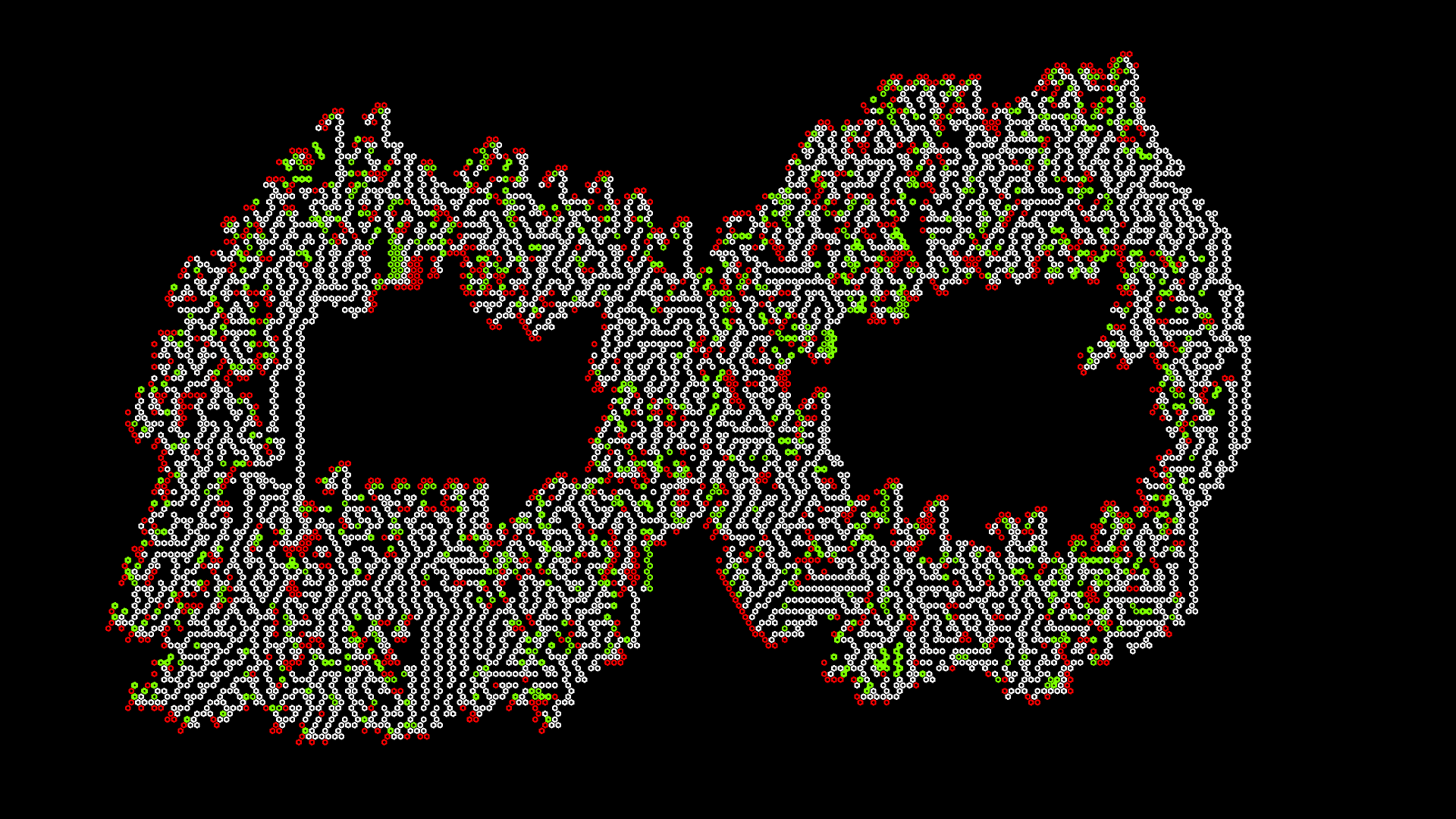Bloom/Collapse
Bloom/Collapse is a selection of two prints from a series of experiments in texture, scale and patterns. The work attempts to capture recurring patterns found in nature at various scales, from the atomic to the cosmic.
produced by: Keita Ikeda
Introduction
This project is part of my ongoing attempt to introduce new methods to my creative process. I had been fatigued by my own methodology and aesthetic, and wanted to make work that could surprise me. My work often involves tightly defined, often symmetrical animated geometries, and when it doesn't, I tend to look for other technical challenges. This routine was becoming predictable and tired, at least to me. This assignment gave me an opportunity to explore new methods -- it gave me a useful set of constraints, forcing me to engage with medium and ways of working previously unfamiliar to my practice.
Medium
The brief of the assignment was to tell a story through a specific visual language on print. Initially, in the hope that it would generate something unexpected and emergent, I made a self-organising hexagonal cellular automata program. After taking screenshots, I realised that this would not work well on print. While it produced interesting results, its appeal lay in its transience and interactivity. It worked well to tell a story and to communicate a process, because it is a process; however without the change over time, its crux went amiss.
This pushed me to engage with the medium of print more firmly. I bought a sketchbook to experiment with, and before I even started drawing and painting, I was struck by the texture of paper. After working with displays for a long time, the underlying textural layer and its interaction with different pigments felt fresh to me. With this in mind, I set out to make a textured generative painting, whose content deals with scale. I wanted my work to have a textural, almost tactile feel upon closer inspection.
Composition
The idea for the content came about when I saw a trailer for Masterclass lectures on space exploration by astronaut Chris Hadfield, in which he says, "It will be a great moment of introspection for humanity if you're the person who finds that one little fossilized flower on Mars." I found myself drawn to the image of a lone flower blossoming with the universe as its backdrop. Beyond the image itself, it was the symbolic significance of such a little thing in a vast and complex system that spoke to me: its potential implications for humanity's conception of the universe, and in turn themselves.
Following this inspiration, I implemented a simple planetary class system, that draws planets with Tyler Hobbs' generative "watercolor" algorithm (Hobbs, 2017). The class contains variables representing the size of the planet, distance from its star at the centre of the canvas, its orbital period, and so on. I then layered the Pentagram of Venus (visualisation of the Earth's and Venus' orbits) over the planets. Pentagram of Venus looks remarkably like a flower, and I felt that it visually captured the above idea without prescribing meaning.
In the end, I chose to make my planets co-centric and overlapping, incrementing the radii in a for loop. I felt that this made the image more cohesive. This way, it resembled many things at various scales: an atom, the human eye, a mandala, a star, and of course, a flower. The colors were chosen randomly, however.
I printed the images on wallpaper, which has its own subtle texture. I feel that the layering of textures worked well, and I found that the fact that the viewer is able to view the work at different distances lends print to detailed, textured images. Despite the work itself not changing over time, the viewer sees the work differently at different distances, creating a process within the viewing. I learned that animation is not the only process that can exist in viewing art.
Reflection
This was not a process that I could have planned. I did not work from the top down and solve a technical problem that I'd set for myself. Instead, I focused on exploring possible compositions in conversation with algorithms. This process has been exciting and rewarding.
References
Algorithmic Botany. http://algorithmicbotany.org/
Chris Hadfield Teaches Space Exploration. https://www.masterclass.com/classes/chris-hadfield-teaches-space-exploration/
Daniel Shiffman. "Cellular Automata", Nature of Code. https://natureofcode.com/book/chapter-7-cellular-automata/
KTBYTE. "Pentagram of Venus". https://blog.ktbyte.com/2018/02/25/pentagram-of-venus/
NASA. "Planetary Fact Sheet". https://nssdc.gsfc.nasa.gov/planetary/factsheet/
Sighack. "Generative Watercolor in Processing". https://sighack.com/post/generative-watercolor-in-processing, https://github.com/sighack/watercolor-simulation
Tyler Hobbs. "A Generative Approach to Simulating Watercolor Paints" (2017). https://www.tylerlhobbs.com/writings/watercolor





































































